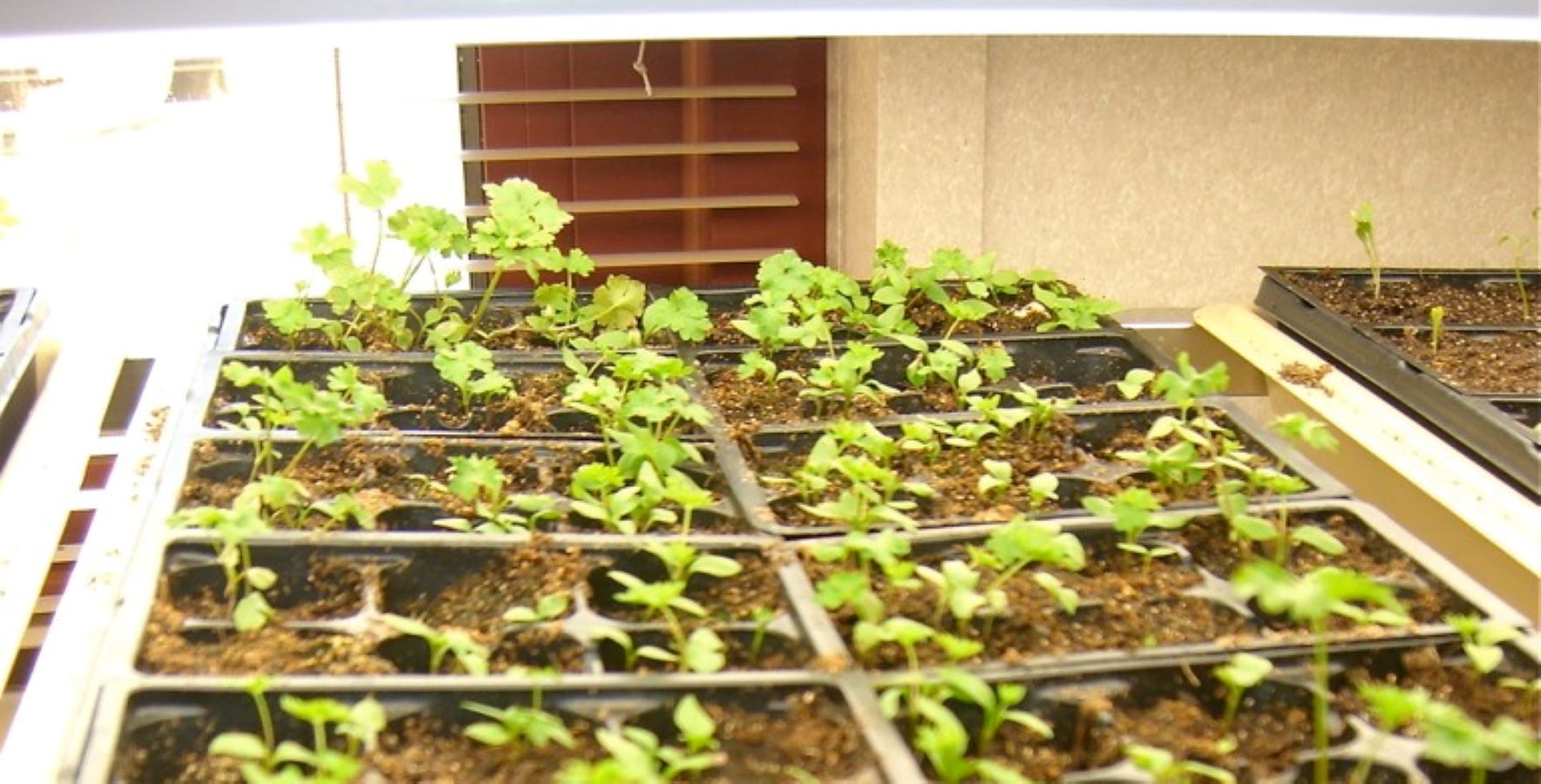Starting Seeds Indoors

Though the year has just begun, cool-season crops can begin to be grown outdoors in a few short months. Spring showers will soon moisten the soil, the hours of sunlight will extend, and the ground will warm slightly, but not too much, and thaw. These factors combined make right now the time to begin the indoor seed-sowing process to start your garden transplants.
Success with sowing seeds indoors largely depends on their growing requirements, and knowing exactly how long it takes a specific seedling variety to grow into its outdoor transplanting size. Luckily, this information can typically be found on the seed label or a quick internet search, so the process doesn’t have to be painful. Know the target date the plug will be transplanted in your garden. Subtract from this the time needed to grow a plant to size. Growth time accounted for; this will give you an approximation of the best time to sow your seeds. Our K-State Johnson County Extension Website has a general gardening calendar guideline.
Correct watering of sowed seeds is a critical component for successful germination. The soil must be kept moist for successful germination, as newly emerged roots only have the water in their immediate vicinity for support. If the soil is dry, the fragile roots of young plants will desiccate as they lack the internal carbohydrate storage to sustain themselves. Inversely, too much water on a growing seedling will likely result in a condition called “damping-off,” where fungi enter either the seed or the stem of an emerging plant and cause a soft rot that kills it. This can partially be negated by placing clear plastic wrap over your seedling trays after sowing and watering. This allows the soil to stay moist but not overly saturated by trapping the moisture for longer.
You also need to manage light and temperature, as too little light could result in wilting and disease issues, and too much can instigate sunburn or overheating. While garden vegetables prefer full sun, several cool-season crops and some herbs can handle a dappled shade. Knowing the light requirements of these plants at full-grown size will give you an indication of how to treat them as seedlings. A soil temperature in the 60s (Fahrenheit) will help prevent plants from over-elongating and becoming lanky. If striving for stockier plants, brushing a hand over the seedlings numerous times daily will encourage them to grow sturdier.
Approaching the transplant date, another factor should be addressed before the plugs enter the ground. Elements like wind, a cold breeze, or sitting in the mid-afternoon sun can quickly prove lethal for unacclimated seedlings. Because of this, a “hardening off” period is required.
Hardening off is done by gradually exposing plants to the outdoors in doses. Beginning around two weeks before they go into the ground, place the plants outdoors in a protected area for a few hours. From there, continue to work them outward, into the elements, for longer durations. Repeat the exposures until the planned transplant date. Your spring garden will be stocked with veggies in no time.
Anthony Reardon, Horticulture - Small Farms agent, 2023
Return to Vegetables Agent Articles